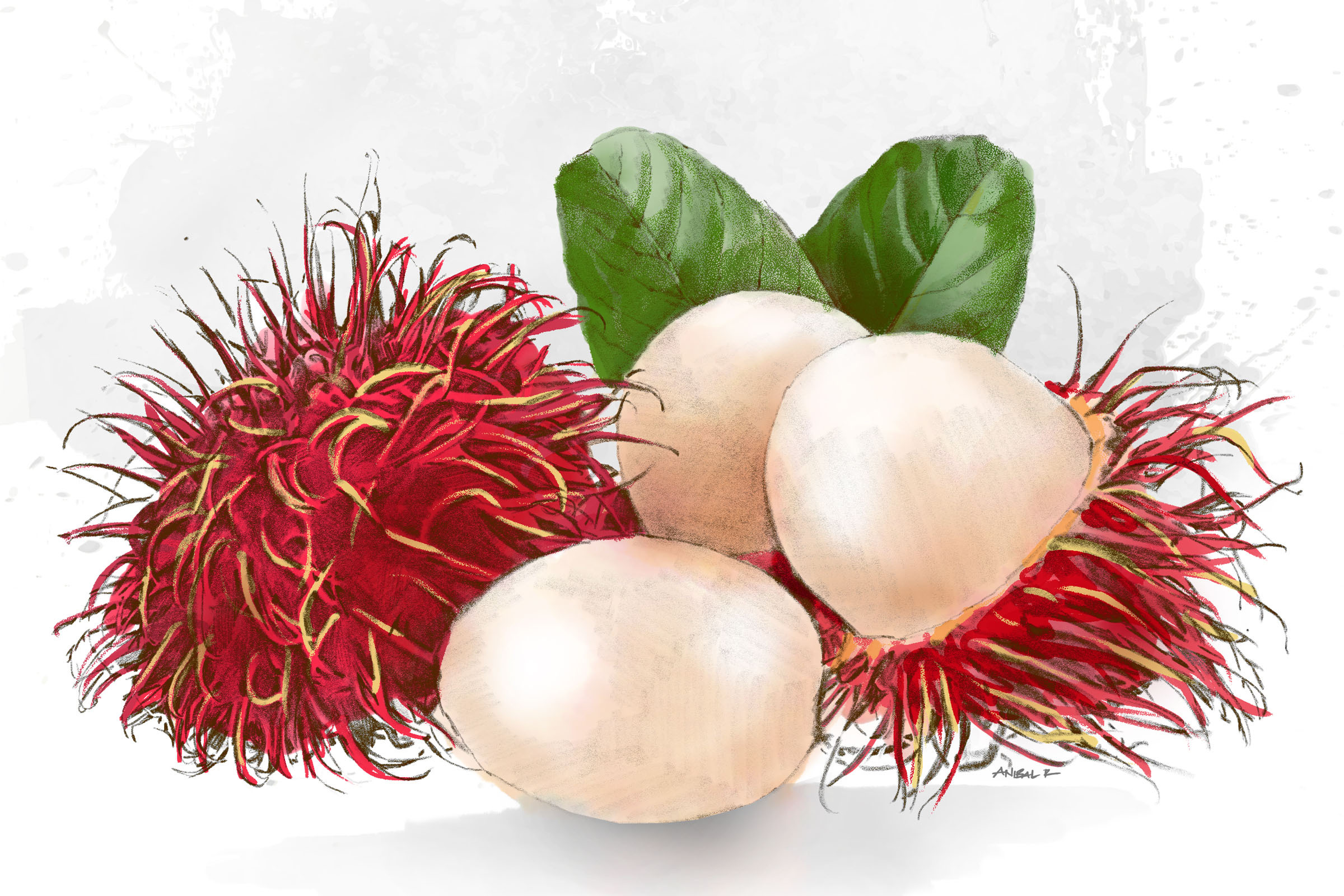The rambutan looks like a snack straight out of a Dr. Seuss book. Despite its spikey appearance, do not be swayed from enjoying this funky fruit’s unique flavor profile and many health benefits.
As noted by Healthline, this fruit is native to the Southeast Asian regions like Malaysia and Indonesia. “Rambutan got its name from the Malay word for hair because the golf-ball-sized fruit has a hairy red and green shell. Its unmistakable appearance is often compared to that of a sea urchin,” according to Healthline.
With the looks of a sea creature, you eat the rambutan in the same way you would eat some sweet lychee. First, peel off the outer shell to expose the foggy white fruit flesh, then enjoy the creamy sweet flavor housed on the inside. While enjoying rambutan, be mindful for the large dense seed in the center.
The rambutan is stocked with vitamins and minerals, and can be a great source of vitamin C and copper. Vitamin C aids in cell health and absorbing dietary iron, and if you were to eat roughly 5-6 servings of this delectable fruit, you would be meeting 50% of your daily vitamin C needs, according to Healthline. “Rambutan also contains a good amount of copper, which plays a role in the proper growth and maintenance of various cells, including those of your bones, brain and heart.”
Besides the vitamins and minerals, the rambutan also helps promote healthy digestion, it can aid in weight loss and could help fight infection, according to Healthline. Due to half of the flesh being insoluble, it adds bulk to your stool and helps speed up intestinal movement. This reduces the likelihood of constipation. On the flip side, according to the Food Garden Experience the soluble fiber can “form a gel-like substance in your gut that helps slow down digestion and the absorption of nutrients.” This can reduce appetite and provide a sense of fullness. Lastly, thanks to its high levels of vitamin C, rambutan can help encourage production of white blood cells that help fight infections.
It is said that the peel and seed also contain nutritious properties as well, but neither are considered edible. They appear to contain compounds that can be toxic to humans, states Healthline. Though some cultures have been known to consume both the peel and seed, there are no reliable or proper cooking methods at this time, so it is recommended to avoid eating the seed and peel all together.
So, even though the appearance of the rambutan can be quite comical and a bit intimidating, it is shown to be very versatile by sweetening up any recipe or by adding something and healthy to your diet!
*Illustration by Anibal Rodriquez
Related Articles
How Can Grapes Help Dry Skin?

